Switch to the mobile version of this page.
Vermont's Independent Voice
- News
- Arts+Culture
- Home+Design
- Food
- Cannabis
- Music
- On Screen
- Events
- Jobs
- Obituaries
- Classifieds
- Personals
Browse News
Departments
-
Education

Scott Official Pushes Back on Former State…
-
News

Burlington Budget Deficit Balloons to $13.1 Million
-
Education

Senate Committee Votes 3-2 to Recommend Saunders…
- Court Rejects Roxbury's Request to Block School Budget Vote Education 0
- Norwich University Names New President Education 0
- Media Note: Mitch Wertlieb Named Host of 'Vermont This Week' Health Care 0
Browse Arts + Culture
View All
local resources
Browse Food + Drink
View All
Browse Cannabis
View All
-
Culture

'Cannasations' Podcaster Kris Brown Aims to 'Humanize'…
-
True 802

A Burlington Cannabis Shop Plans to Host…
-
Business

Judge Tosses Burlington Cannabiz Owner's Lawsuit
-
Health + Fitness

Vermont's Cannabis Nurse Hotline Answers Health Questions…
-
Business

Waterbury Couple Buy Rare Vermont Cannabis License
Browse Music
View All
Browse On Screen
Browse Events
Browse Classifieds
Browse Personals
-

If you're looking for "I Spys," dating or LTRs, this is your scene.
View Profiles
Special Reports
Pubs+More
Hooked: A Love Story From Vermont's Opioid Crisis
Published December 11, 2019 at 10:00 a.m.
“Regret should be one of the stages of grief," I told my mother last spring. We were talking, as we often do, about things we wished we'd known, wished we'd done differently, when my youngest sister, Madelyn Linsenmeir, was alive. I'm told this is common after a loved one dies — cataloging the moments you wish you'd said or done something differently, the what ifs haunting your memories like ghosts.
Maddie died last fall after living for more than a decade with opioid-use disorder. When the obituary I wrote for her went viral, this newspaper, one of two my family paid to publish it, offered me a yearlong position writing about the opioid crisis in Vermont.
My regret has become more acute over the course of the past year, which I've spent researching and reporting on the disease my sister struggled with so mightily, learning things I wish I had known when she was alive. I have wanted a time machine like I have never wanted anything in my life.
My family often didn't know how to help Maddie when she was sick. We were either unaware of or misunderstood the medications and services that could have saved her — as, it seemed, did many of the professionals who treated her and the institutions she passed through. So my family did the only thing we knew how: We loved her.
I believe in love the way some people believe in God or science. I believe in science, too, that both it and love have the power to transform and heal, but in the absence of the former I focused on the latter. I believed that if my family loved Maddie enough, we could keep her alive.
Every time I saw her I covered her face with kisses: I love you, I would say as I kissed her forehead, I love you as I kissed each eyebrow, I love you I love you I love you. Soon it was a ritual: Everywhere from my front door to the parking lot of inpatient rehab to the visiting room at Riker's Island, she would tilt her face to me as we said goodbye, and I would cover it with kisses.
When you are alone or scared, close your eyes and imagine me kissing your face, I would tell her. Remember that my love is always with you.
In bed every night before I fell asleep I closed my eyes and imagined her face, imagined kissing her nose, I love you, her cheeks, I love you, I love you, her lips and chin, I love you, I love you, as if my love were a prayer that could protect her.
When she died I thought I had been wrong about love. I thought heroin was stronger and fentanyl far more powerful. I thought endocarditis, the infection she contracted through injection drug use and ultimately died of, could defeat anything. But as I researched and reported the six stories in this series, as I talked to people across the state and learned of public health approaches being implemented around the world, I realized I wasn't wrong about love; I was unaware of the science and research, the evidence-based versions of love that actually could have saved my sister's life and the lives of hundreds of thousands of others who have died of this disease.
These are some of the what ifs that haunt my memories: What if I'd known how long it takes to achieve remission from opioid-use disorder? What if I'd understood how effective medication is in treating it? And the one I'm most ashamed never occurred to me while Maddie was alive: What if instead of focusing solely on helping her get sober, I had talked openly with her about how to protect herself when she was not?
I have spent the past year wishing for do-overs and second chances and time machines. But it occurred to me recently that time machines travel not just back into the past but to the future, as well. So instead of wishing for impossible things I will wish that Maddie's death and what I have learned since can be someone else's time machine. That sisters and policy makers and doctors and neighbors and correctional officers — that all of us — will take what I wish I had known when my sister was alive and apply it to the millions of people with opioid-use disorder who still are.
A counselor at Valley Vista, an inpatient rehab in Vermont, was the only person to warn me. "Don't be surprised if she relapses," the woman said after pulling me aside at the end of a visit. It was Maddie's first stay there, and though she would return many times over the next decade, these were the early days of her disease, when my family believed Maddie's addiction was a dam temporarily diverting her life from its course; this rehab was what would guide it back into place.
Why, I wondered, was this woman being so negative?
It wasn't the decade spent watching my sister's disease rage and remit and recur that made me realize the woman was right; it was a statistic I came across while researching the first story in this series: It takes the average person with opioid-use disorder eight years and four to five attempts at treatment to achieve one year of remission from the disease.
That woman wasn't being negative — she was the one person I encountered who was telling the truth. But either I didn't want to hear it or her lone voice was drowned out by a cacophony of others. The consensus was that Maddie should immediately get and stay sober, and any failure to do so was hers, not a reflection of the amount of time it takes to get into stable remission from opioid-use disorder or the lack of meaningful treatment to help get her there.
Maddie's visits to rehab were usually followed by periods of sobriety that ranged from days to months to almost a year. But she invariably experienced a recurrence of her disease and a spiral into drug use that brought her to scarier and scarier places. According to various social workers and counselors, this was her fault: She wasn't getting honest with herself. She didn't take responsibility for her actions. She hadn't hit bottom.
When she lied to us or her doctor or probation officer or caseworker about relapsing, both the relapse and the lie were evidence of a character flaw, not a stage of her disease process or a failing of ours.
"As a society, we have a system that is so laden with stigma and shame and punitive measures that when somebody doesn't feel safe to talk to us about something that could put them in jail or take their child or make them lose their housing, then we shame them for lying," said Grace Keller, program coordinator at the Howard Center's Safe Recovery, Vermont's oldest syringe services program. "So many failures that are on the part of these systems we've placed instead on the person who is struggling."
There's a catchphrase that's popular among people who work in the field of substance use: "We need to meet people where they're at." But what if where people are at is actively using drugs? Most of our systems require, promote or reward abstinence. But if it takes almost a decade and multiple attempts at treatment to achieve one year of sobriety, there's a good chance that using drugs is where people are going to be at. And when I say people, I mean our sisters, sons, aunts and neighbors struggling with this disease.
So the question becomes: How do we keep our sisters and sons and aunts and neighbors safe when they are actively using drugs? How do we keep them connected to their families and their doctors and their communities when they are in the throes of their use and most need support? How do we keep them alive so that, if and when they're ready, they have a chance to recover?
The answer is something called "harm reduction," which is exactly what it sounds like: reducing the harm to people who are actively using drugs.
Harm reduction is our time machine.
Opioid-use disorder is a deadly disease. People who have it are 10 times more likely to die than average. More than 130 Americans die every day from accidental opioid overdose. In 2018, for the first time in history, the likelihood of dying from an opioid overdose was higher than in a car crash.
These last two statistics don't include people like my sister, who died not of an overdose but an infection, or the millions who are struggling every day to survive their disease. Because that's what all those trips to rehab were: my sister's attempts to survive.
I hadn't even heard the term "harm reduction" before my sister died, though it's something I practice every time I get into a car: I put on a seat belt. Driving is dangerous, and some forms are more dangerous than others (think riding a motorcycle without a helmet versus driving a station wagon with airbags), but I reduce the potential harm by wearing my seat belt. I may still be involved in a crash, and I may still be hurt in that crash, but the seat belt reduces the chances that I will be harmed.
This same principle of harm reduction applies to opioid-use disorder. Harm reduction neither condones nor condemns illicit drug use, just acknowledges that it occurs and that there are ways of reducing the harm associated with it.
"When you strip away stigma and you look at this problem from a purely scientific and compassionate point of view, what you're left with is harm reduction," said Keller. "It's not a new thing; it's how we treat all other medical conditions. Doctors work with the patient on what they think will work for them and give them a menu of options."
But many of the services available to people with opioid-use disorder are abstinence-based, which Keller described as "all or nothing." She pointed out, "None of us live in an all-or-nothing model. If you're focused on abstinence and only abstinence, then you're missing a large part of the population, if not the majority of people, who use drugs."
As with driving, there are methods of illicit opioid use that are safer than others. Arguably the safest is taking a prescription opioid in the dosage prescribed by a physician; the most dangerous is injecting heroin, which could have been cut with substances that are far more potent. But as with driving, there are ways of mitigating the possibility of harm:
Don't use alone. Carry the overdose-reversing drug naloxone. Test your drugs with a strip that will detect fentanyl (which is 50 times stronger than heroin) and carfentanil (which is 5,000 times more potent) and adjust your use accordingly. Clean your skin before injecting to prevent the bacteria that naturally lives there from entering your bloodstream. Always use sterile syringes and other equipment.
All the supplies and information needed to take these steps are available at Safe Recovery in downtown Burlington, which also hosts legal and vaccination clinics, provides HIV and hepatitis C testing, and a year ago began providing rapid access to buprenorphine. Buprenorphine and another medication, methadone, are the standard of care for treating opioid-use disorder. They are also a form of harm reduction: Both medications reduce the mortality rate from opioid-use disorder by half or more.
I learned to drive the year my sister Maddie was born. How many times over the course of her young life did I strap her into a car seat and, later, remind her to wear her seat belt?
But when she developed opioid-use disorder, I never, not once, talked to her about staying safe while she was using. The fact that my sister injected drugs was not a secret. I'd found syringes hidden in my house while she was staying with me; I'd seen the track marks and abscesses on her arms and feet and neck; I was with her at the hospital when she was diagnosed with hepatitis C.
But I didn't encourage her to visit Safe Recovery, which is located in the city where we grew up and she spent a great deal of her adult life, because I didn't know about Safe Recovery. Even if I had, I wonder now whether I would have thought then that encouraging her to go there was tacitly encouraging her addiction.
Which is the opposite of the truth. According to the Centers for Disease Control and Prevention, people who visit programs like Safe Recovery are five times more likely to enter treatment and three times more likely to stop using drugs than people who don't.
These programs are also associated with a 50 percent reduction in HIV and hepatitis C, and they reduce deaths by teaching people how to prevent and respond to overdoses when they occur. Since 2013, Safe Recovery has distributed more than 25,000 doses of naloxone.
There are similar data about safe consumption sites, places where people can inject their own drugs under medical supervision: They reduce drug use, incidence of HIV and hepatitis C, and overdose death, while increasing public safety, entry into treatment, and access to other medical and social services.
I had also never heard of safe consumption sites when my sister was alive, but the idea would have made me uncomfortable, because the idea of my sister injecting drugs made me uncomfortable. But my discomfort didn't stop it from happening.
"If people are going to do it anyway," said Patricia Fisher, a physician and chief medical officer at Central Vermont Medical Center, "you might as well teach them how to do it so that they're not creating bloodstream infections." Fisher was a member of a 2017 commission convened by Chittenden County State's Attorney Sarah George to study the potential impact of a safe consumption site in Vermont. Like me, Fisher was at first uncomfortable with the idea.
"I initially thought there's no way I could support ... a place where people come and use drugs," said Fisher. But after researching and reading the literature, "I was a convert," she said. "There is good data to support that this is really a good harm-reduction method."
A site in Vancouver, B.C., for example, "showed a 35 percent reduction in deaths related to overdose and a 30 percent increase in users entering treatment," Fisher said. If visitors to the site aren't ready for treatment and say, "'I just want to inject safely,' the answer is, 'Great. We'll support you in that, and we're here if you want to enter treatment.'"
There has not been a single fatal overdose at any of the 120 safe consumption sites in 10 countries around the world, but they're illegal in the United States. In 2017, the American Medical Association called for the creation of pilot sites here, citing the same research that convinced George's commission, which included the Burlington and South Burlington police chiefs, to recommend the establishment of a safe consumption site in Vermont.
"People are still dying from this," Fisher said. "The number of deaths continues to climb in Vermont and across the country. There have got to be ways to help people stay alive long enough to access treatment. I, like anybody else, initially was like, 'You know, is it really my job to tell people how to inject safely?' But the answer to that is, 'Yes, it is.'"
On a cold day in January 2009, I drove to New Hampshire to see my sister. She'd been kicked out of a treatment program for some minor offense I can no longer recall and was staying at a homeless shelter. My family at this point had been indoctrinated into the belief that the only way Maddie would get "clean" was if we stopped "enabling" her and adopted a "tough love" approach, which meant avoiding contact with her when she was using. But we all agreed I should go anyway.
If wishes were time machines, I would travel back to the diner where I took my sister to lunch knowing what I do now about harm reduction. As she sat across from me in the booth, a wave of cold air washing over us each time someone opened the door, and told me that she loved needles as much as she loved heroin, I would have reached across the table and taken her hand in mine. That scares me, I would have said, but please tell me more. I would have held her gaze and told her, I want to understand what that feels like for you. I would have said, I love you so much, sweet girl, and more than anything in the world I want you to be safe. Here are some ways to do so.
Emma, who asked that I not use her real name, had what she described as a "tough childhood." Her family didn't have a lot of money; she experienced trauma early in life; and, as the oldest of three kids being raised by a single mom, "I carried a lot on my shoulders," she said. "I had a lot of burden on me."
She was in eighth grade when a friend crushed up a painkiller on a bathroom counter at school and she tried opioids for the first time. "All of a sudden I found this thing that gave me relief that I never had before," she said. "It made me feel like, This is how I get through this. This is my answer."
After that she sought out opioids however she could. "Pretty quickly I found out that hanging out with older guys was often an opportunity," she said. When she was 15, she moved in with a boyfriend who was addicted. At 17 she started injecting heroin when they could no longer afford the pills that cost hundreds of dollars a day. "That's when things really kind of took a turn," she told me.
After high school she worked two waitressing jobs, but "it wasn't enough, it was never enough" to support her addiction. "I was getting my needs met through boyfriends," she said. "Like, plural. I bounced around, I stayed here, I stayed there."
It was a boyfriend who brought her to Safe Recovery for the first time, when she was 18 or 19.
"I had never been in a syringe exchange before," she said. "When I walked in there, I was like, I can't believe this exists." It wasn't just the sterile syringes and other supplies that astonished her. It was the revelation that "people really care. As judgmental as the world is about people who use drugs, there was a place that was going to help me stay safer. That was really shocking to me."
Up until then, her experiences with professionals who worked with people with substance-use disorder fell into two categories: pity — "Oh my God, what can we do to help this poor girl" — or judgment — "Oh my God, get away from me. You made your bed, you're the problem with this world." In either case, the expectation was always that she get sober immediately. If that's not what she wanted or was ready for, she was told, "We don't have anything to offer you."
She knew as soon as she walked in the door that Safe Recovery was different.
"I remember him that first time," she said of Tom Dalton, who started Safe Recovery in 2001. "He just treated me like a person. He was like, 'Hey, how's it going?' as if it wasn't any crazy thing that I was hobbling because I had abscesses and hadn't showered in a week and was looking a complete mess."
Dalton was caring but casual. He let her know that she could come back as often as she wanted, and he was there if she needed help. "He wasn't trying to sell me anything," she said. "He wasn't trying to sway me this way or sway me that way or push me at all."
She had previously tried and continued to attempt treatment at various abstinence-based detox and inpatient rehab programs but always left within a few days.
"I never felt I was treated well, like I was important to anybody or that I mattered or anybody really gave a crap about what the outcome was for me," she said. "That is not a good way to feel when you're doing something really scary and really hard. You need people to be genuine and supportive. You need people to really care." Which is what she'd found at Safe Recovery, and so it was there she returned.
"I might stay away for a couple of months," she said, "but I would always go back when things were really bad and I just didn't know where to turn. I would just go and sit with Tom and talk to him about everything."
Dalton helped her get and stay on the waiting list for medication, which at that point in Vermont was years long. In the absence of effective treatment, Emma's life continued to deteriorate. She was living with a boyfriend in the back of a van, weighed less than 100 pounds and had abscesses from injecting drugs. She did sex work for money and made trips to New York City to get drugs, where she found herself in situations she thought she might not survive
"It's hard to put into words how much Safe Recovery meant to me during that time," she said. "I really, truly feel like harm reduction kept me alive during the hardest periods of my life." Having access to sterile equipment helped her avoid life-threatening infections and viruses, but she pointed out that anyone can hand out syringes or naloxone. "Those things are huge," she said, "but it's the connection that's really, really special and that people seem to have a hard time getting right.
"What was really important was just having a safe place to go and people that I could trust, that I knew would have my back no matter how bad it got. It just meant the absolute world to me, and it helped me to not give up. Everybody needs one safe place."
With Dalton's help, Emma finally got into treatment at the Howard Center's Chittenden Clinic in South Burlington, where she began taking methadone. She used crack for another year or so, but getting off illicit opioids was "life-changing," she said. "I didn't have to spend every waking second planning and strategizing how I would get through the next few hours. I was able to stop worrying about survival every day."
And though she was using other substances, not using opioids significantly reduced her harm: She no longer injected drugs, she was at a lower risk for overdose, and because her desire for crack was much less than for heroin, she wasn't putting herself in risky situations to get the drug.
When she found out she was pregnant, she immediately stopped using altogether. After she had her son, she began taking classes at the Community College of Vermont, eventually transferring to Champlain College, where she majored in social work and excelled academically. She now has two kids and a job working in harm reduction.
While Emma knows that openly sharing her story would help reduce the stigma surrounding opioid-use disorder, she asked me not to disclose her identity because that stigma is so prevalent.
"I have nothing to be ashamed of," she said, "but I live in the culture I live in, and I don't want to be judged. I don't want my kids to be judged. I don't trust that I won't always be looked at as the one on methadone, and I don't want to be known only for that.
"I take a medication once a day and go about my life," she continued. "It's a great life. I have a family that is intact, and we love each other. I have a career that fits my soul, and I know that every single day I'm doing something worthwhile that means something in somebody's life and in mine. And I just feel so, so lucky for that, you know?"
Across much of Vermont, it is still difficult, if not impossible, to access harm-reduction measures such as syringe services and medication.
Up to a third of Safe Recovery's clients travel there from outside of Chittenden County, where services are spotty at best.
And although the state provides better access to medication than any other, more than half of Vermonters with opioid-use disorder aren't getting treatment for their disease.
In Morrisville, one doctor is providing both.
Betsy Perez is not a primary care physician or addiction doctor; she is a urologist. Federal law requires that doctors get a special waiver to prescribe buprenorphine for addiction; two years ago, Perez got that waiver because of the support she received from the community when her own daughter was struggling with opioid-use disorder. Her daughter eventually attended a treatment program in Atlanta and has been in recovery for almost six years.
"I had to pay it back," Perez said.
In spite of the incentives and support Vermont provides to doctors to prescribe this life-saving medication, less than a quarter of them do so — a rate that, while inadequate, is much higher than most other states. The waiver itself may be a barrier to some. While any doctor can prescribe the painkillers blamed for creating the current opioid crisis or buprenorphine to treat pain, to prescribe buprenorphine to treat addiction, physicians must undergo 10 hours of training. Advanced-practice nurses and physician's assistants, who are also eligible for the waiver, must complete 24 hours of training. Even with the waiver, health care professionals can only prescribe buprenorphine to a limited number of patients — for doctors it's 30 in the first year.
The waiver process is not evidence-based and creates the perception that treatment for opioid-use disorder is more complicated than other forms of medicine, in spite of the fact that primary care physicians commonly prescribe treatments that are more complex and risky than buprenorphine.
Stigma may be another reason doctors don't seek the federal waiver. Physicians are more likely than the general public to express "negative attitudes" toward people with opioid-use disorder, according to a 2016 study published in the journal Drug and Alcohol Dependence. An overwhelming majority of doctors said they would be unwilling to work with or have someone with the disease marry into their family. Two-thirds believed that people with the illness are "more dangerous than the general population" and that employers should be allowed to deny them work.
I've witnessed these negative attitudes in doctors and nurses treating my sister everywhere from the emergency department to the maternity ward to the ICU. I've watched their faces change when they learned she was a person who injected drugs. Because my sister was a better actress than most health care professionals, she masked her shame when she was treated badly, but I know she burned with it. She had a disease and wanted to be treated like any other person, any other patient.
This stigma has fatal repercussions, in that it prevents people from seeking treatment for both their opioid-use disorder and its collateral consequences.
"I've seen people with abscesses [so big] I couldn't cover [them] with my two hands," Keller told me, "and they don't feel safe getting treatment. We shouldn't have people that are hurting so badly in our community."
What if all doctors were like Perez, who said her favorite patients are the ones she treats for opioid-use disorder?
"They are the hardest-working group of people. They are up against so much, and they just keep pushing," she said of her 40 patients with opioid-use disorder. "If you give them one speck of your attention, if you are present while you are in the room with them, if you give them one little moment of the benefit of the doubt that they might be a good person and want everything that we all want — love, happiness, good health, a decent place to live, their children to be happy — if you give them one second of that, they respond."
Her whole practice has become involved in this care: Her office manager became a certified recovery coach, and patients donate to a fund that can be used to provide people with gift certificates for diapers and other necessities.
Last month, Perez began hosting syringe services at her office a couple of hours a week. A van from the HIV/AIDS prevention organization Vermont CARES had been offering them in a nearby parking lot, but very few people showed up. Perez speculated this was because they didn't want to be seen walking up to a vehicle that dispenses syringes, essentially outing themselves, in a small town, as people who inject drugs. When Vermont CARES sought alternative locations, Perez offered her office. Instead of approaching a van in a parking lot, people who need supplies can instead walk into a doctor's office, where a volunteer nurse will provide sterile syringes and offer to connect them to help.
My sister visited the emergency department dozens of times during her life to be treated for everything from kidney infections to suicide attempts to seizures caused by withdrawal from drugs. What if each time, or even once, she had been offered buprenorphine?
In July 2018, Central Vermont Medical Center in Berlin became the first in the state to prescribe buprenorphine to patients in the emergency department, providing the most immediate access to the medication in Vermont; five others followed suit, in Burlington, Bennington, Brattleboro, Randolph and Windsor.
This is harm reduction.
"When people are on Suboxone [a brand name of buprenorphine combined with naloxone], there's a pretty good chance they're not going to die from an overdose," said Javad Mashkuri, medical director of emergency services at CVMC. "It's protective."
Not only that, it can serve as an introduction to recovery.
"People feel better when you give them the medication," he said. "They leave feeling better than when they came in. That's powerful."
Patients with opioid-use disorder are prescribed three days' worth of the drug in the emergency department and connected with doctors in the community who will see them within 72 hours. Eighty percent of people make their follow-up appointment.
"But even if someone only takes three days' medication ... at least for those three days they didn't die," Mashkuri said. "And maybe they remember that they did feel better and, down the line when they are ready, they'll come back.
"I always tell people, 'Hey, come back. If today's not the day, you can come back anytime you want.' It's naïve for us to think that everyone's ready when they show up in the emergency department. And the point is, how do I keep you alive and healthy so that when you're ready for treatment, if that day comes, you're OK."
Three months ago, "Jillian" walked into the emergency department at the University of Vermont Medical Center in Burlington and asked for a prescription for buprenorphine.
Speaking on condition of anonymity, Jillian told me she'd become addicted to opioids after being prescribed painkillers for an injury she suffered during childbirth. For a year she found doctors who would continue to prescribe to her, including one who wrote her prescriptions for 200 pills at a time. When she was finally cut off, she became so sick from withdrawal she bought buprenorphine off the street, stealing from relatives to pay for the medication. Her grandmother finally confronted her, threatening to call the police and take her daughter away if she didn't get help. She went to the emergency department in Burlington the next day.
"I was treated so well there," she said about her experience. The doctor prescribed her three days' worth of buprenorphine and connected her with the UVM Medical Center's Addiction Treatment Program, which will see referrals from the emergency department within 72 hours. A recovery coach she met at the ED followed up with her daily to offer support.
The only problem? Jillian lives in Rutland. She'd initially sought treatment at the city's treatment hub, Rutland Regional Medical Center's West Ridge Center, but although it has no "waiting list," there is a wait for an appointment. After a frantic Google search, she learned that she could get immediate access to buprenorphine at the Burlington hospital.
"I didn't want to continue using the way I was," she said, which required she steal or find other ways to get money to buy the medication that kept her from being sick. So she made her way two hours north.
"I have spent a lot of my career watching what happens to people when they ask for help and can't get it," Safe Recovery's Keller said. "These people are losing their kids, dying, overdosing, contracting endocarditis, but all along they have been asking the community for help."
Jillian was lucky: "My family was so supportive," she said. "My grandmother lent me her car and watched my daughter for me. My aunt drove up with me most of the time. But it was a lot. We're talking a six-hour day" once a week. It took two months for the Addiction Treatment Program in Burlington to transition her to a buprenorphine prescriber in Rutland.
According to Mashkuri, Jillian's experience is not uncommon. "Most people that are coming in are already buying [buprenorphine] on the street," he said. "They're getting it by any means they can. And when they finally come to us, they're running out of money or they can't find it and they're terrified of going back to shooting something they don't want to shoot."
Just as Jillian traveled from Rutland to Burlington for help, people with opioid-use disorder travel to the central Vermont emergency department from around the state. "We have people that come from a few counties over because they can't get it where they are," Mashkuri said. "We've got people that come from Lamoille and St. Johnsbury, out that way, which is great, but then it's hard to get them plugged in, and they can't keep driving back here."
In June of 2018, George, the Chittenden County state's attorney, announced that she would no longer prosecute people for possessing buprenorphine without a prescription. The medication is "intended to be life-saving," she wrote in a memo about her decision, noting that it helps people reduce or stop their heroin use, which in turn reduces crime and fatal overdoses.
This is harm reduction, and in Chittenden County, it appears to be working. Last year, the rate of opioid-overdose deaths in the county was 50 percent lower than in 2017, even as the number of deaths in the state overall nudged up slightly.
But a bill to decriminalize buprenorphine statewide stalled in the Vermont legislature earlier this year, in spite of support from doctors, researchers and people with opioid-use disorder who testified that it would save lives.
Vermont Health Commissioner Mark Levine opposed it, not because he thought it was a bad idea, but because he thought it was a bad idea in Vermont.
In his written testimony, Levine stated that, if he were the health commissioner in "any other state in the U.S.," he "would be unequivocally for this bill as a potentially important public health measure." But he described Vermont as a state "with no waiting lists" for treatment and a "true capacity to treat all," referring to Vermont's innovative hub-and-spoke system, which has dramatically expanded treatment capacity here and serves as a model for other states. Decriminalizing buprenorphine could be "disruptive" to the system of treatment that "we and others praise so often," Levine testified.
But research shows that people who take illicit buprenorphine prior to getting a prescription for it are significantly more likely to remain in treatment than people who don't.
And in spite of the state's efforts to expand access to treatment, barriers remain for many Vermonters.
I spoke to multiple people this year who said they could easily score heroin in their rural communities but found it impossible to access treatment. A 2017 evaluation of the hub-and-spoke system found that the average travel time to treatment was 20 minutes — a number that is in all likelihood much higher — with a range of two minutes to two hours. Many patients have to make that trip every day to get their medication, despite the fact that the ability to take medication at home results in better outcomes for people with opioid-use disorder. Most doctors and clinics also require that patients participate in counseling and urine analyses, though there is little to no evidence supporting their efficacy.
For some people with opioid-use disorder, work schedules prevent them from getting treatment. When Safe Recovery began prescribing buprenorphine last year, Keller and her colleagues started seeing many patients employed in the trades who had been buying buprenorphine off the street to stay sober because they couldn't make it to South Burlington's hub by the time it closes at 11 a.m.
"People are told, 'Just go to the clinic,' as if it's always that easy," said Dalton, who after 17 years at Safe Recovery is now executive director of Vermonters for Criminal Justice Reform. A Safe Recovery client suggested to him that the state's decision makers should have to go through what people with opioid-use disorder experience.
"'Ask these bureaucrats to jump through the hoops we have to to access their primary care,'" the client told Dalton. "'Ask them to travel an hour in the cold, and if they don't have a car, they have to take a bus or hitchhike or walk. If they are one second late, they are refused treatment. And once they get there, they are treated by people who are judgmental and rude; they have to go in a bathroom and pee in front of those judgmental people. If they don't do all of those things, they won't get the medication they need to survive.'"
Dalton added: "These kinds of barriers can make sustained treatment nearly impossible."
When I pointed out to Levine in a recent conversation that "no waiting lists" doesn't mean treatment is available to everyone, he conceded that "it certainly wouldn't be the end of the world if we decriminalized buprenorphine."
For some people, it may be the end of the world if we don't.
Harm reduction is "a set of practical strategies and ideas aimed at reducing negative consequences associated with drug use," according to the website of the Harm Reduction Coalition, a national advocacy organization. But it's also a form of love, a way of extending compassion and connection to people who are usually met with judgment and stigma.
My sister died of a lethal combination of endocarditis and stigma while incarcerated in Springfield, Mass.
Endocarditis is an infection of the heart lining that can be caused by injecting drugs; sterile equipment could have saved her life.
That infection was not treated because of a fundamental lack of compassion on the part of individual police and correctional officers, as well as a criminal justice system that largely fails to recognize opioid-use disorder is a disease. She was arrested, she begged for help, but she did not receive it until it was too late.
The photo my family chose to accompany my sister's obituary shows Maddie on one of her very best days. She is healthy and beautiful, a huge smile across her freckled face, her son grinning at the camera from behind her in a backpack. It's easy to feel compassion for the version of Maddie in that photo.
The cops and correctional officers who denied my sister health care saw her on one of her worst days. In her mug shot, her hair is dirty and the look on her face is one of despair. This is the version of Maddie who most needed help and was least likely to receive it.
Since my sister died, I've been asked over and over what people can do to help others with this disease. A year ago I didn't have an answer. Now I have many.
Get at least two doses of naloxone and carry them with you everywhere you go. Contact your state representatives and the governor and ask them to support H.162, the bill to decriminalize buprenorphine. Contact your senators and congressperson and ask them to support the federal Mainstreaming Addiction Treatment Act, which would allow health care professionals to prescribe buprenorphine for addiction just like they do any other medication. Ask all of your own doctors whether they prescribe it, and if they don't, ask them to consider it. Make a donation to the syringe services program in your community; if there isn't one, contact Vermont CARES to learn how to bring services there. If you know or love people with this disease (and chances are good that you do), support them both when their disease is in remission and, more importantly, when it is not.
The what ifs I've been asking myself since my sister died are ones that haunt our shared past. Here are a few I hope everyone will consider in the future:
What if we all extended our hands and offered love and connection to people with opioid-use disorder? What if, instead of stigmatizing and judging them, we loved and supported them — even when they are not sober or trying to get sober? What if we viewed people in the throes of their addiction who are actively using drugs every day as people with a disease who are worthy of our love and support? Because that is what they are.
What if we said to them, We as individuals and as a culture, we want you to be safe. We value your life, and we want you to live. Here are the evidence-based tools you need to stay alive. And if and when you are ready to stop using drugs, we will help you to do so. Because we love you, and you are worth it.
In the hospital after my sister died, my mother and I washed her body, taking cloths from a folded stack a nurse brought us, lowering them into a tub of warm, soapy water, and running them across her skin. When we were done, I kissed her face for the last time: I love you, my lips to her forehead, I love you, as I kissed her eyebrows, I love you, eyes and nose and cheeks and lips and chin. Remember that my love is always with you.
What if we all looked at people like Maddie on her worst day, extended our hands and said, We love you. We're right here. Hold on.
Correction, December 13, 2019: An earlier version of this story failed to acknowledge that methadone, a medication used to treat addiction, is also an opioid.
Need Help?
If you or someone you love are suffering from opioid use disorder and need treatment and support resources, here's how to get connected:
- In Vermont: Call 2-1-1, a free and confidential resource hotline provided by the United Way of Vermont.
- Outside Vermont: Call 1-800-662-HELP, a free, confidential 24-hour hotline run by the Substance Abuse and Mental Health Services Administration.
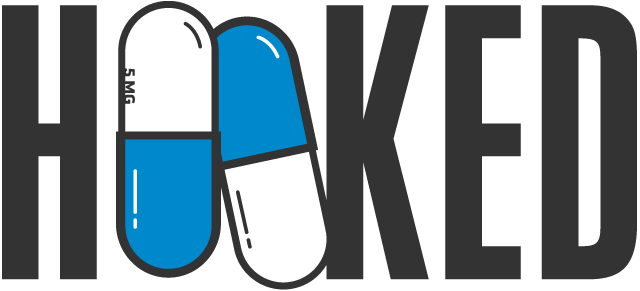
"Hooked: Stories and Solutions From Vermont's Opioid Epidemic" is made possible in part by funding from the Vermont Community Foundation, the University of Vermont Health Network and Pomerleau Real Estate. The series is reported and edited by Seven Days news staff; underwriters have no influence on the content.
Have a tip or a story to share about opioid addiction in Vermont?
Email our news editors at [email protected] or call 802-864-5684.
Got something to say?
Send a letter to the editor
and we'll publish your feedback in print!
About The Author
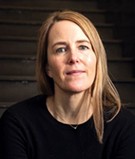
Kate O'Neill
Bio:
In “Hooked: Stories and Solutions from Vermont’s Opioid Crisis,” writer Kate O’Neill explores the state’s opioid epidemic and efforts to address it using traditional journalism, narrative storytelling and her own experiences. Her sister, Madelyn Linsenmeir, died in October 2018 after years battling opioid addiction.
In “Hooked: Stories and Solutions from Vermont’s Opioid Crisis,” writer Kate O’Neill explores the state’s opioid epidemic and efforts to address it using traditional journalism, narrative storytelling and her own experiences. Her sister, Madelyn Linsenmeir, died in October 2018 after years battling opioid addiction.
More By This Author
Latest in Category
Speaking of...
-

Family of Madelyn Linsenmeir Reaches Tentative Settlement in Wrongful Death Suit
Apr 4, 2024 -

Burlington Has Surpassed Last Year's OD Tally — and It's Only August
Aug 4, 2023 -

Vermont's Relapse: Efforts to Address Opioid Addiction Were Starting to Work. Then Potent New Street Drugs Arrived.
Jun 14, 2023 -

A Recovery Center in Johnson Is Helping Reinvigorate the Town
Dec 14, 2022 -

Meth Use Is Growing Around Burlington — and Could Portend More Problems for Vermont
Oct 12, 2022 - More »


























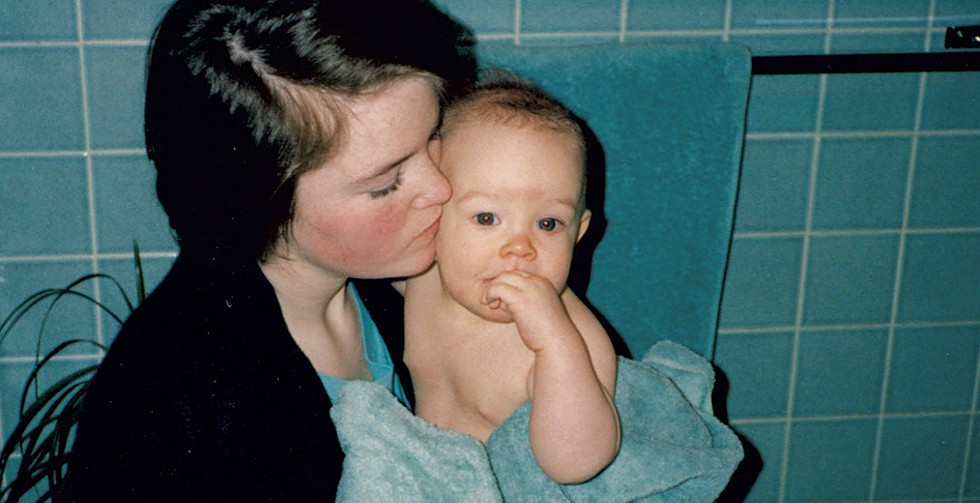
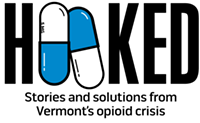
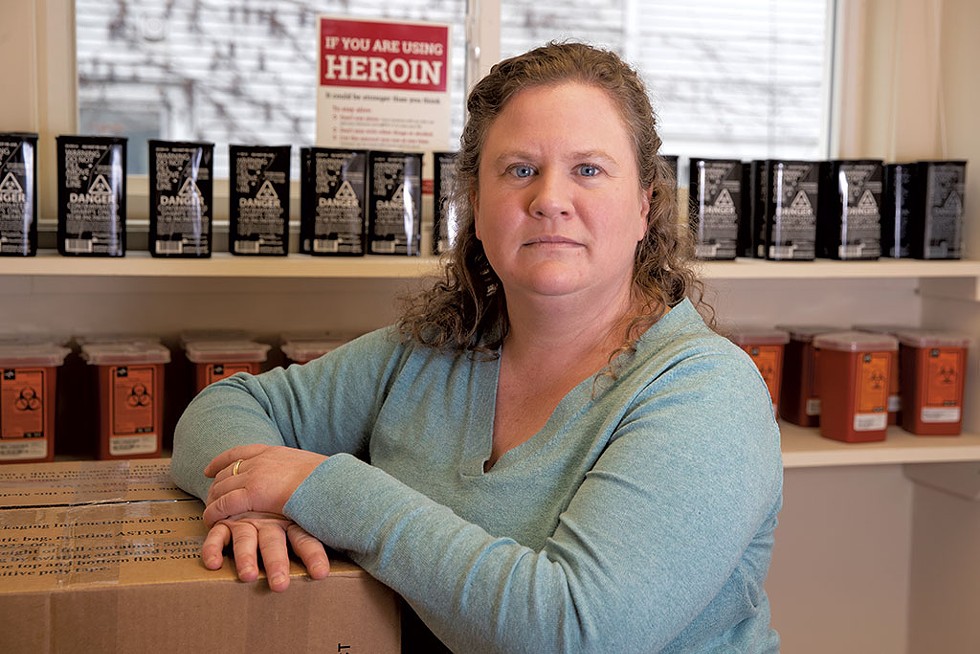
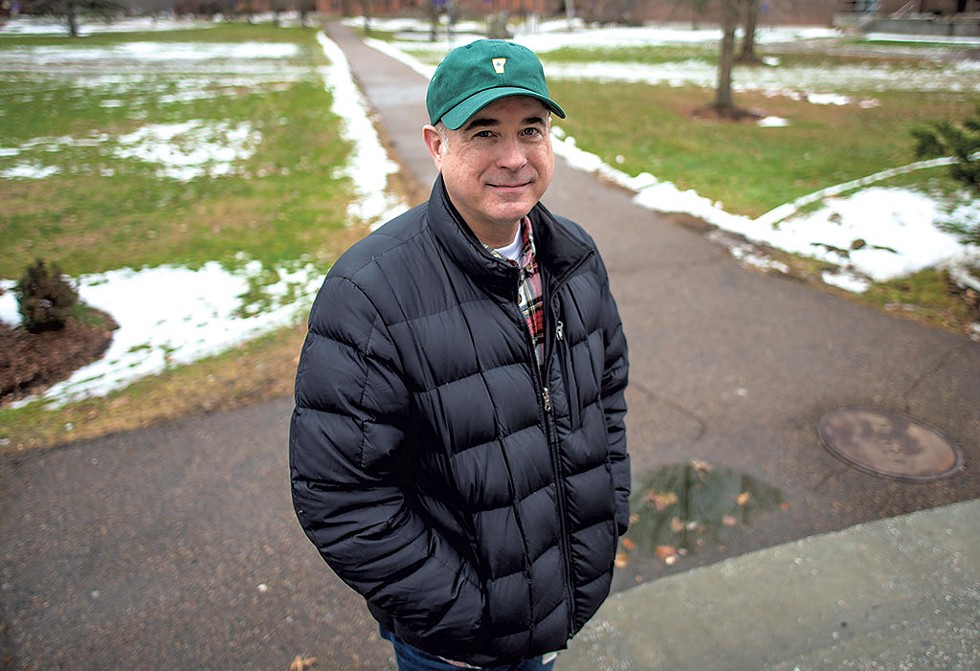
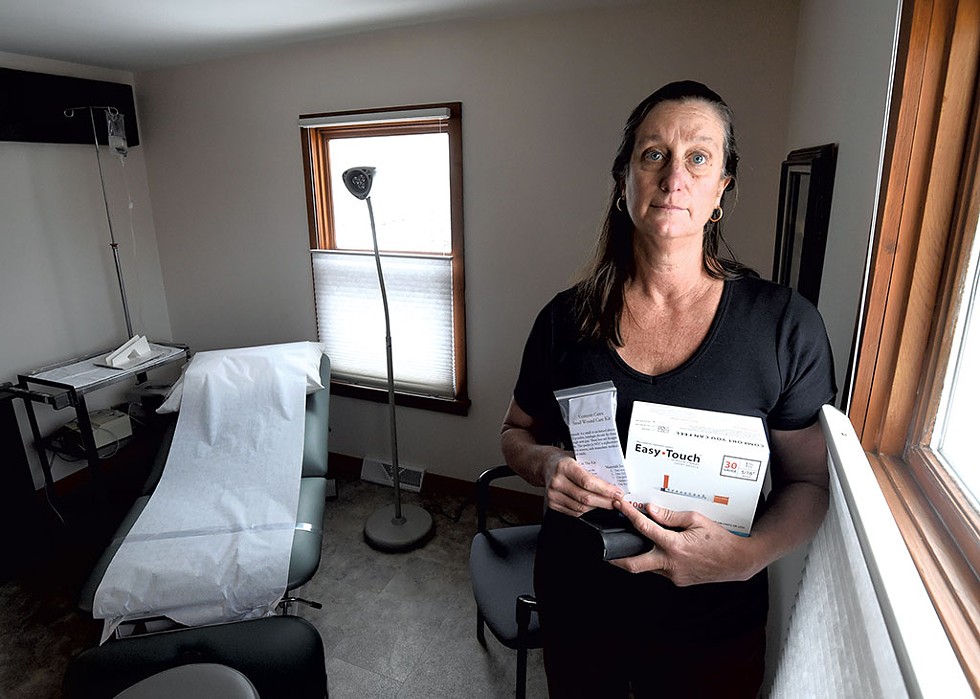
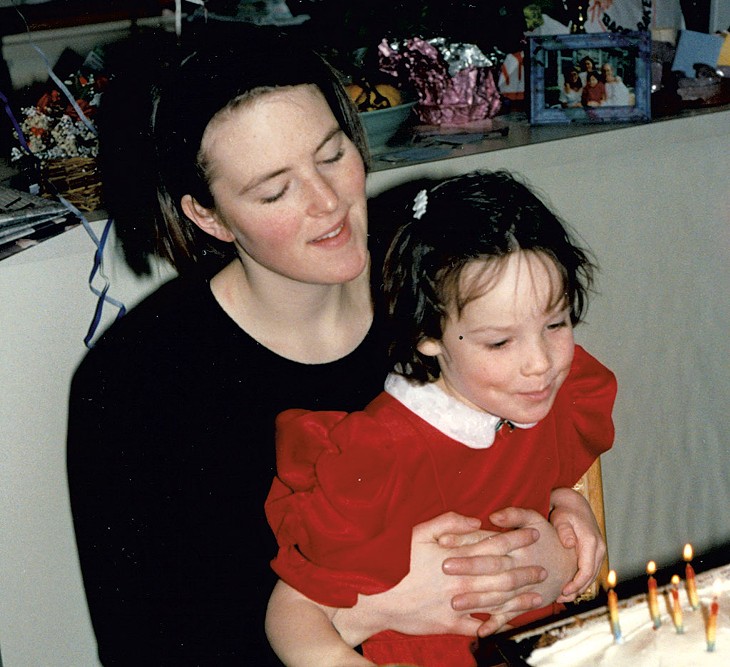
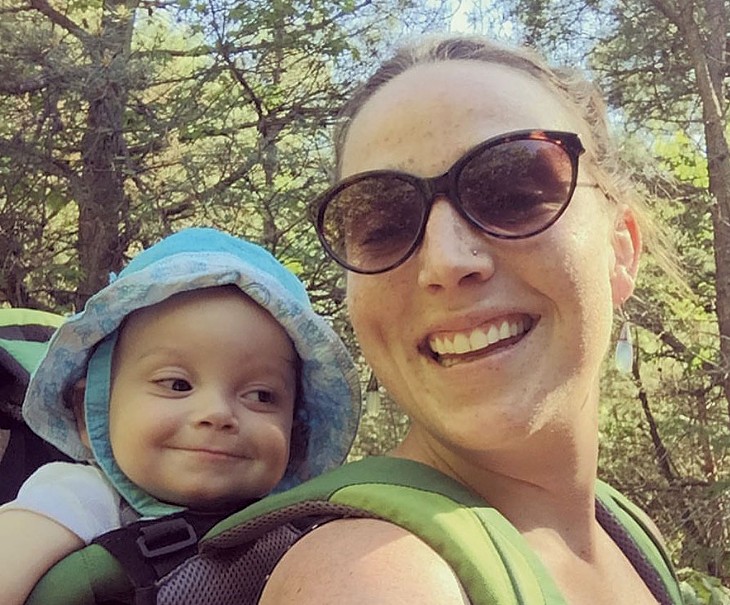
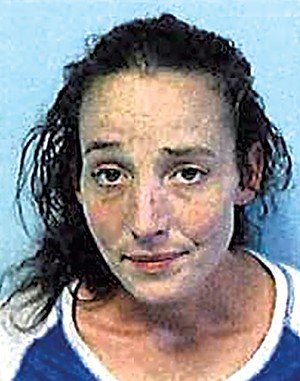
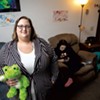

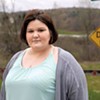
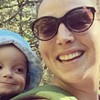

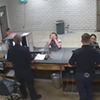
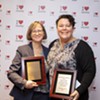
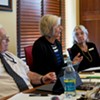
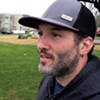
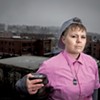
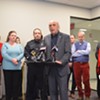


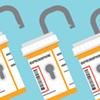
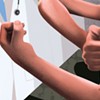

find, follow, fan us: